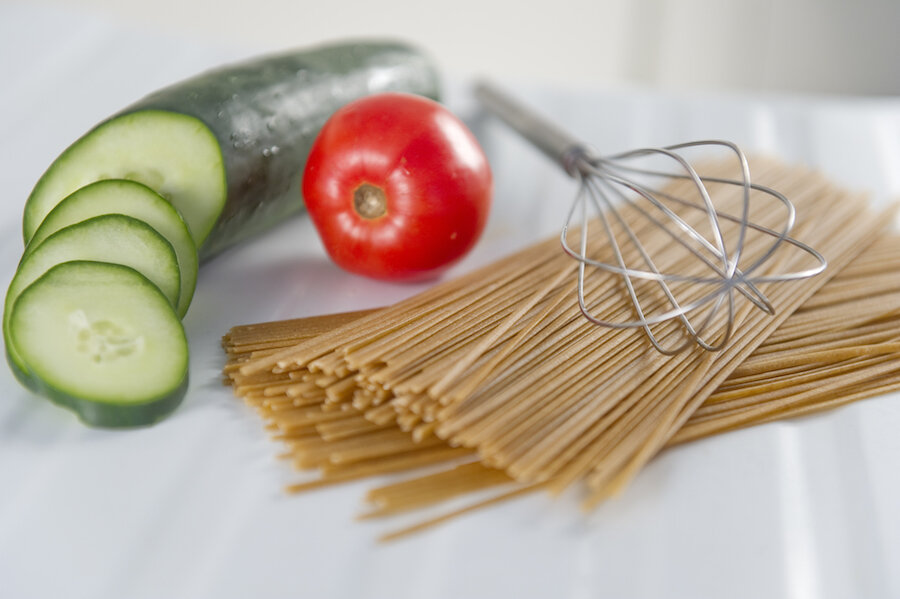The secret to sustainable diets? Pasta.
Loading...
Globally, about 13.5 million tons of pasta are produced annually. In the United States, four out of five people have pasta regularly stocked, according to the 2015 Passion for Pasta Food Waste & Sustainability Consumer Omnibus Survey. While the United States and Europe make up the largest consumption base for pasta, it is also an important food for people living in Latin America, where an average of more than 5 kilograms of pasta is consumed per capita. From Italian rigatoni to Japanese soba noodles, pasta contributes to sustainable diets around the world.
Many different ingredients contribute micronutrients and dietary fiber to global diets through pasta. While wheat and traditional semolina pasta are staples of traditional Italian cuisine, other nutritious grains such as quinoa and brown rice, which are also gluten free, are increasingly popular in North America and Europe. Pasta provides whole grains, B vitamins, and fiber, and it can be fortified with protein and Omega 3s to improve its nutritional profile even further. Asian noodles can be made with rice, yam, or mung bean, further expanding culinary possibilities and opportunities for a balanced diet.
Whole grain pasta still only makes up 5 percent of total pasta sales in the United States, but Americans are seeing a "substantially greater variety of whole grain products in terms of brands and shapes" as the sector moves into the mainstream, says Tim Webster, president of the National Pasta Association.
Furthermore, pasta can be a part of an overall healthy and sustainable dietary pattern when eaten with other plant-based foods, especially vegetables. One study of Italian diets found that pasta has a lower overall environmental impact when compared to bread. And another study by researchers in The Netherlands and the United Kingdom found that substituting 35 grams of meat per day with pasta, rice, or couscous decreases mortality from all causes by 11 percent while simultaneously reducing dietary greenhouse gas emissions by 10 percent. Pasta can be a component of sustainable diets such as the Mediterranean diet and the Nordic diet, which are also associated with lower greenhouse gas emissions.
Dietary guidelines around the world are beginning to include sustainability considerations when making recommendations for nutritional health. Sweden has taken the lead on sustainability research within the context of dietary choices and has formed the Nordic Nutrition Recommendations, which include environmental impact assessments. In Germany, a consumer guide for dietary choices includes a sustainable shopping basket. In the United States, the 2015 Dietary Guidelines Advisory Committee (DGAC) was the first to include a review of sustainable diets in their scientific report, which informs the dietary guidelines for Americans.
Unfortunately, these sustainability recommendations won’t be a part of the final guidelines, but sustainable diets are now a part of the conversation at the federal level. And pasta is a part of many of these recommendations that simultaneously seek to improve nutrition and decrease environmental impact. The U.S. Department of Agriculture (USDA) recommends that a quarter of the plate be devoted to grains such as pasta at every meal, and that half of those should be whole grains.
Cooks often use pasta to reduce food waste in the kitchen, and cookbook authors recommend using pasta as a base for vegetables and other leftover foods that might otherwise go to waste. Furthermore, shelf-stability of pasta is an important aspect of food security, allowing households and food pantries alike to stock this staple. Dry pasta can store for two years, and doesn’t have to be refrigerated, cutting down on household energy use and associated greenhouse gas emissions. In fact, pasta has a lower carbon footprint and lower water footprint than both red meat and poultry.
And pasta, often cooked in family–sized quantities, is an important symbol of the social importance of food and conviviality. Where pasta has been adopted around the world, it has taken on the unique flavors of the region and becomes a canvas for serving traditional and local foods.
This article first appeared in Food Tank.







